
La Belle Dame Sans Merci Summary, Model Explanations, Critical
May be called LA BELLE DAME SANS MERCY. Verba Translatoris. Go, litel book! god sende thee good passage! Chese wel thy way; be simple of manere; Loke thy clothing be lyke thy pilgrimage, And specially, let this be thy prayere Un-to hem al that thee wil rede or here, Wher thou art wrong, after their help to cal Thee to correcte in any part or al.
The Gate to SciFi Country (or as the kids call it syfy) A Summary
So, 'La Belle Dame sans Merci' is perhaps the result of emotional conflict merging with poetic craft. Keats created the poem using his imagination out of which came beauty and truth, contained in a dream-like and disturbing drama. In addition, the poem takes the reader into a supernatural world, where real or imagined experience morphs into.
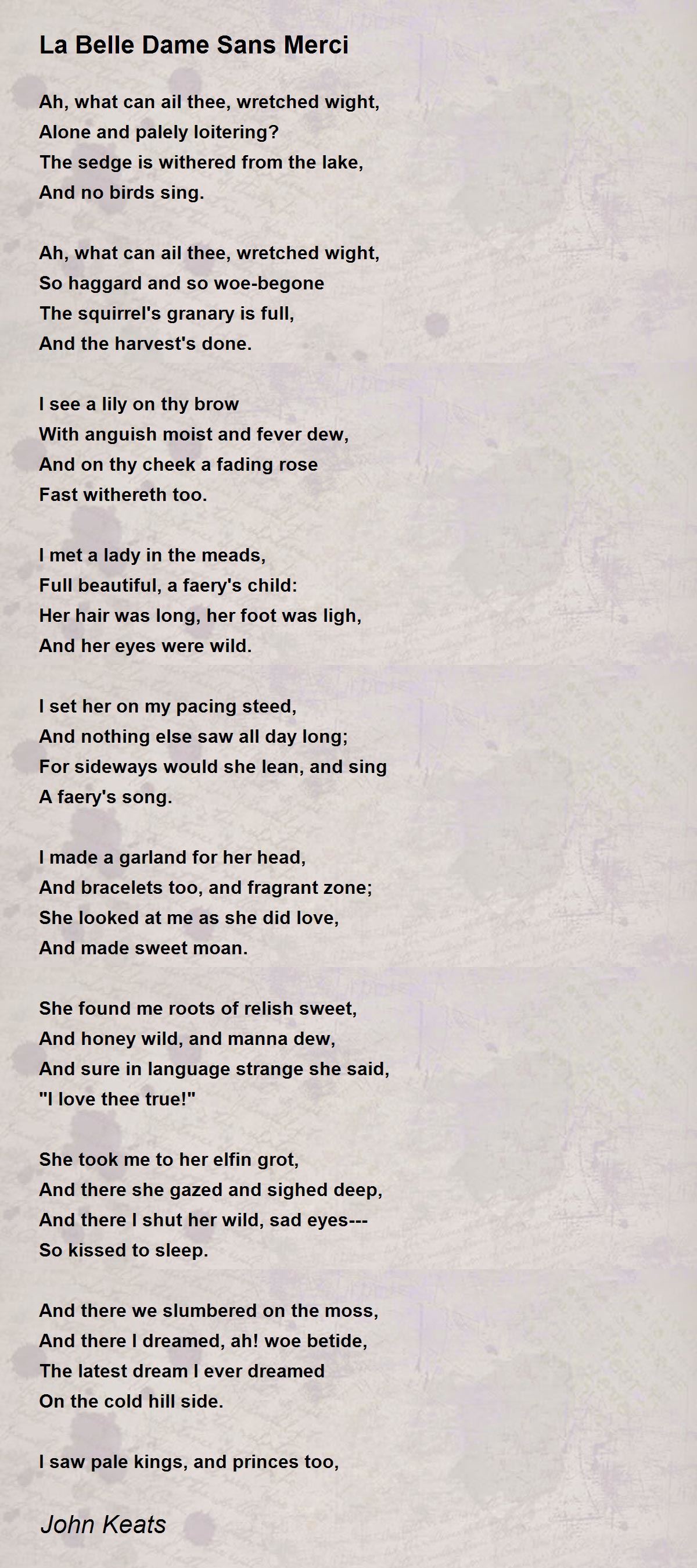
La Belle Dans Sans Merci
He used the title of the 15th-century La Belle Dame sans Mercy by Alain Chartier, though the plots of the two poems are different. Keats' first version was apparently written in one sitting, and.
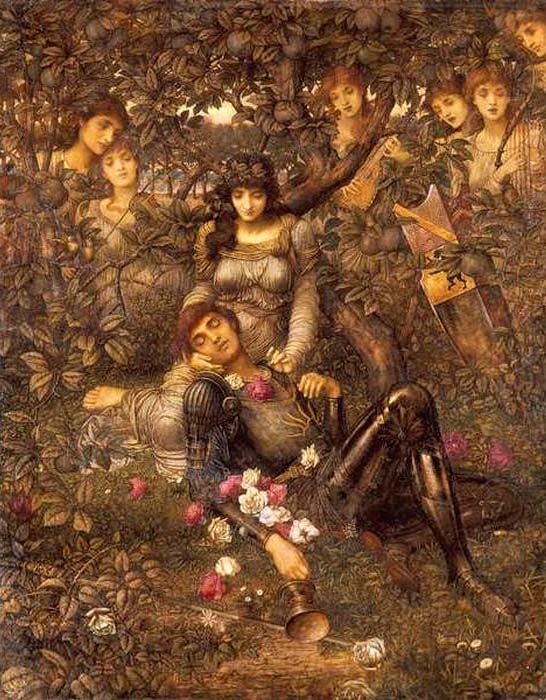
La bella dama sin piedad Cultura Bizarra
Popularity of "La Belle Dame sans Merci": John Keats, a great English poet wrote 'La Belle Dame sans Merci'.It is a ballad published in 1819. The title was derived from the poem, La Belle Dame sans Mercy, written by Alain Chartier. The poem speaks about the story of a knight and a beautiful woman.

(no title) Картины, Художники, Живопись
'La Belle Dame sans Merci' is a ballad from the Romantic period. It was part of a literary movement that had arisen to counter the theories of the Age of Enlightenment - to bring back imagination, beauty, and art to a culture that had become science-based, theoretical, and realist. Romantic writers saw the violence of the French Revolution as proof of the failure of science and reason.

"La Belle Dame sans Merci / Hath thee in thrall!" La Belle Dame sans
The latest dream I ever dream'd 35 On the cold hill's side. I saw pale kings and princes too, Pale warriors, death-pale were they all; They cried—"La Belle Dame sans Merci Thee hath in thrall !" 40 I saw their starv'd lips in the gloam , With horrid warning gapèd wide, And I awoke and found me here, On the cold hill's side. And.

"La Belle Dame sans Merci / Hath.. La Belle Dame sans Merci
They cried—' La Belle Dame sans Merci Keats wrote the poem in a letter to George and Georgiana Keats, April 21, 1819. Thee hath Thee hath The version of this poem has "Thee hath" (see The Letters of John Keats, 1814-1821 , ed. H. E. Rollins, 1958); though other versions of this poem reads "Hath thee" in thrall!'

"La Belle Dame sans Mercy Sir Frank Dicksee" Sticker for Sale by
The body of La Belle Dame sans Mercy is composed of 100 stanzas of alternating dialogue between a male lover and the lady he loves (referred to in the French as l'Amant et la Dame). Their dialogue is framed by the observations of the narrator-poet who is mourning the recent death of his lady. The first 24 stanzas describe the mourning poet, the.
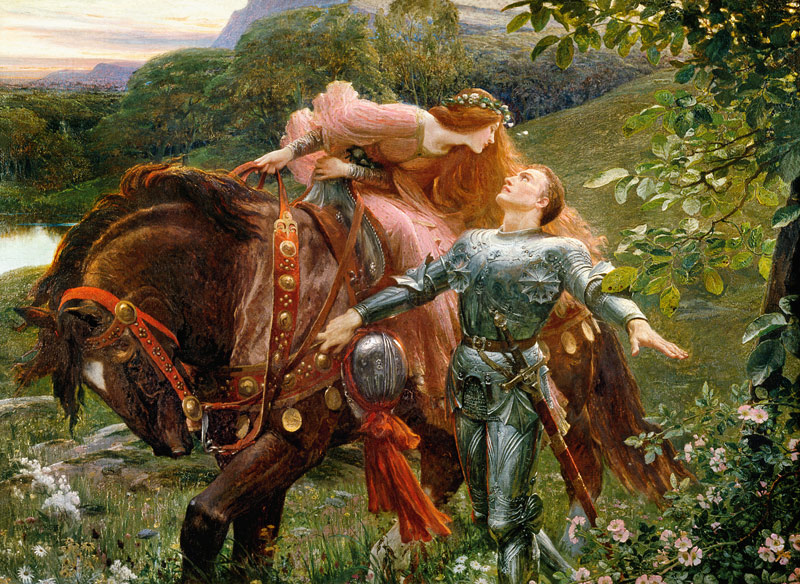
Essere sorpreso ex nipote la belle dame sans merci waterhouse felicità
La Belle Dame sans Merci: summary 'La Belle Dame sans Merci.' 'The woman is beautiful, but merciless.' Keats's title, which he got from a 15 th-century courtly love poem by Alain Chartier (La Belle Dame sans Mercy), provides a clue to the poem's plot: in summary,the poem begins with the speaker asking a knight what's wrong - this knight-at-arms is on his own, looking pale as he.

La Belle Dame Sans Merci Arthur Hughes 1863 Pre raphaelite art, Pre
"La Belle Dame sans Merci" is a ballad, a medieval genre revived by the romantic poets. Keats uses the so-called ballad stanza, a quatrain in alternating iambic tetrameter and trimeter lines. The shortening of the fourth line in each stanza of Keats' poem makes the stanza seem a self-contained unit, gives the ballad a deliberate and slow movement, and is pleasing to the ear.

Frank Dicksee Story Paintings Review Phi Stars
"La Belle Dame sans Merci" is a ballad by John Keats, one of the most studied and highly regarded English Romantic poets. In the poem, a medieval knight recounts a fanciful romp in the countryside with a fairy woman—La Belle Dame sans Merci, which means "The Beautiful Lady Without Mercy" in French—that ends in cold horror.Related to this focus on death and horror, Keats wrote the poem.

LA BELLE DAME SANS MERCI by Sir Dicksee 1000 Piece Puzzle Eurographics
And there we slumbered on the moss, And there I dreamed, ah woe betide, The latest dream I ever dreamed. On the cold hill side. I saw pale kings, and princes too, Pale warriors, death-pale were they all; Who cried—"La belle Dame sans merci. Hath thee in thrall!" I saw their starved lips in the gloam.
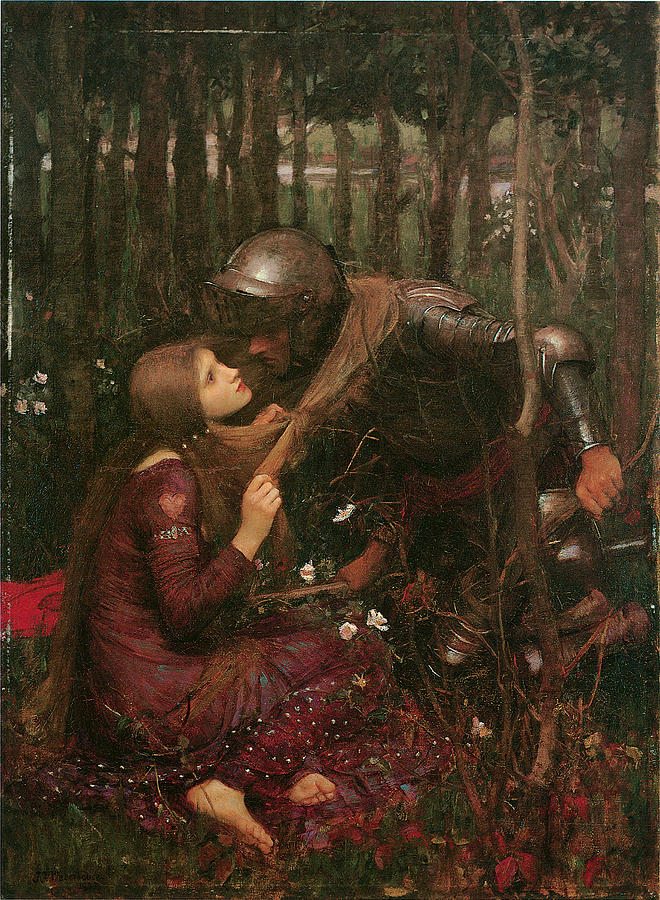
La Belle Dame Sans Merci Painting by John William Waterhouse Fine Art
"La Belle Dame sans Merci" ("The Beautiful Lady without Mercy") is a ballad produced by the English poet John Keats in 1819. The title was derived from the title of a 15th-century poem by Alain Chartier called La Belle Dame sans Mercy. Considered an English classic, the poem is an example of Keats' poetic preoccupation with love and death.
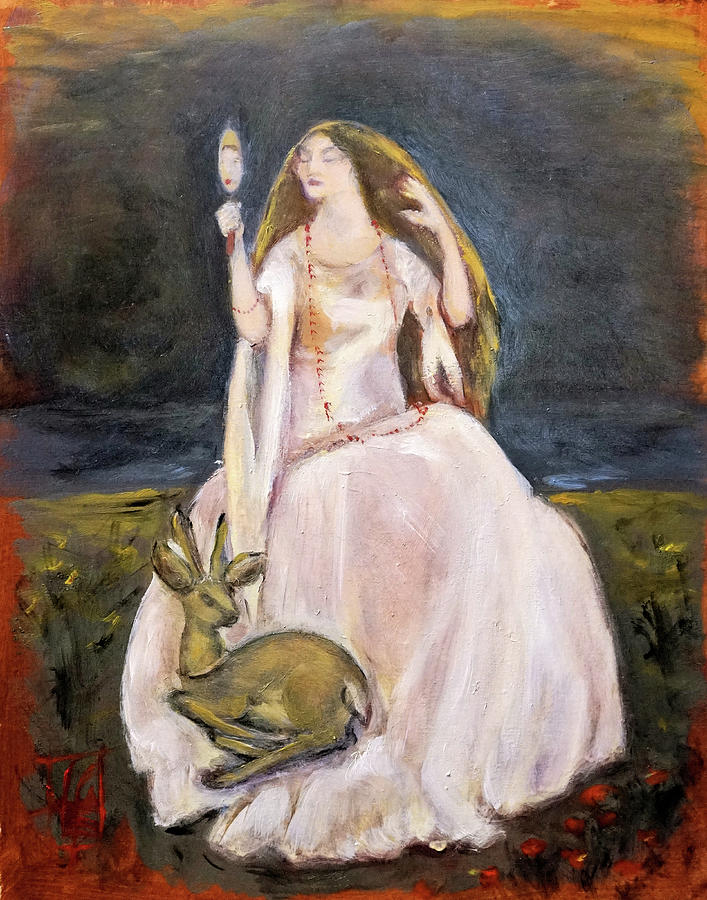
La Belle Dame Sans Mercy after Cowper Painting by Linda Falorio
La Belle Dame sans Merci Summary. In "La Belle Dame san Merci," a knight recounts how he came under the thrall of a beautiful woman. The speaker comes across a lonely knight sitting in an arid.

John William Waterhouse A Study For La Belle Dame Sans Merci painting
When John Keats was finishing "La Belle Dame sans Merci" in the early spring of 1819, he was just weeks away from composing what would become some of English literature's most sustained and powerful odes. "La Belle Dame," a compact ballad, is wound as tightly as a fuse. Keats's life and conflicts, his love for his neighbor Fanny Brawne, and his awareness of impending death are.

Black and White La Belle Dame Sans Merci
La Belle Dame sans merci, poem by John Keats, first published in the May 10, 1820, issue of the Indicator. The poem, whose title means "The Beautiful Lady Without Pity," describes the encounter between a knight and a mysterious elfin beauty who ultimately abandons him. It is written in the style of